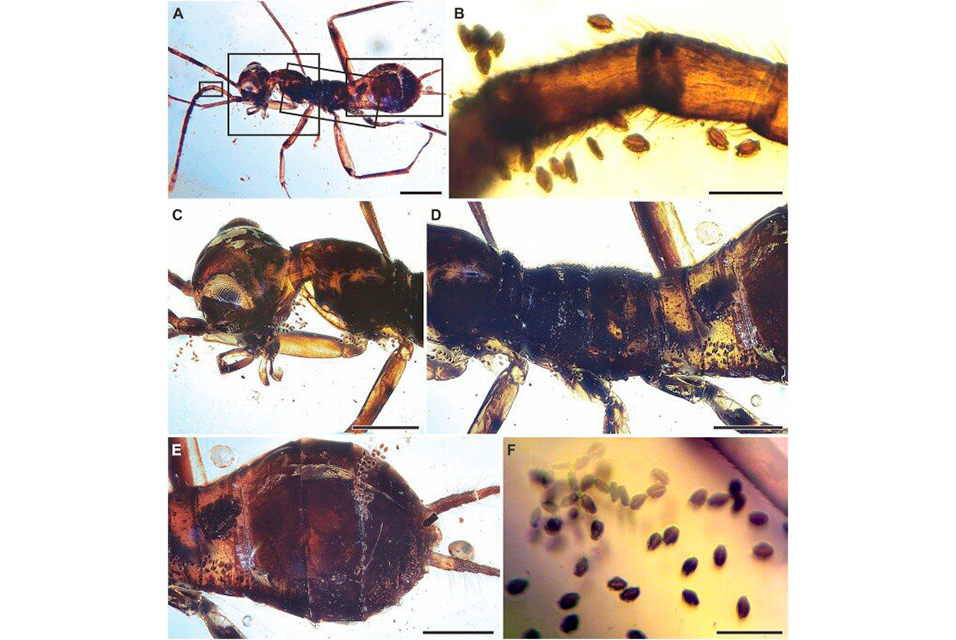NANJING.- Alienopteridae were originally proposed as a new insect order (Alienoptera) in 2016. At first, they were only found in mid-Cretaceous Burmese amber, but later specimens were also reported from Brazil and the U.S.
However, the life history, systematic position, and taxonomic status of Alienopteridae (Alienoptera) have been much disputed since the group was established.
Recently, Luo Cihang, a postgraduate student supervised by Prof. Wang Bo, and his colleagues from the
Nanjing Institute of Geology and Palaeontology of the Chinese Academy of Sciences (NIGPAS) investigated the morphology, life habits and evolutionary history of Alienopteridae.
This study was published in Earth-Science Reviews.
The team used an array of methods, including optical microscopy, confocal laser scanning microscopy (CLSM), X-ray microcomputed tomography, geometric morphometric analysis and phylogenetic analysis.
"We discovered that one alienopterid nymph is laden with gymnosperm pollen grains," said Prof. Wang Bo. Therefore, by providing the first possible direct evidence of gymnosperm pollination by a fossil dictyopteran, researchers may confirm a previously unknown gymnosperm-insect association.
This is the only known fossil pollination example from the Polyneoptera, one of the major lineages of winged insects and indicated that some Mesozoic dictyopterans may have been important pollinators of gymnosperm.
In addition, based on morphological observations and summaries of a large number of specimens, the study confirmed that Aethiocarenodea is actually a specialized type of alienopterid nymphs, which revised the systematic position of Aethiocarenodea.
The researchers also conducted phylogenetic analysis based on a matrix with 56 characters and 39 terminals to evaluate the phylogenetic placement and evolution history of Alienopteridae.
There is robust evidence that the Alienopteridae is a specialized taxon of Dictyoptera, sister to Umenocoleidae, and Alienopteridae alone should not be ranked as a separate order.
"We also reported an alienopterid nymph fell prey to a lacewing larva," said Prof. Wang. "These discoveries provide direct evidence for us to reconstruct the Cretaceous terrestrial ecosystem and further confirm that insects already evolved complex behaviors during the Cretaceous."









